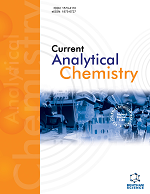
Full text loading...

Tizanidine hydrochloride (TZ) is a centrally acting skeletal muscle relaxant used in the management of spasticity. Drug stability under different conditions has been described in the literature, but photolytic degradation rate and degradation products are not known. This study aimed to determine the TZ photolytic degradation kinetics and explore the structures of five degradation products observed after UV-C light exposure for 7 days.
An HPLC method, previously validated, using a Phenyl Zorbax Eclipse XBD Agilent ® column (250 mm x 4.6 mm, 5.0 μm), methanol, and water (50:50, v/v) with 0.5% trimethylamine pH adjusted to 3.5 with acid phosphoric mobile phase, at 0.6 mL/min flow rate, and 25ºC, was applied to drug quantification in the different time intervals. Mass spectrometry (UHPLC-QTOFMS), using a Shim-pack XR-ODS III (50 X 2 mm, 1.6μm), was carried out to determine the structures of degradation products.
Approximately 55.16% of the drug was degraded after 7 days under UV-C light. The photolytic reaction indicated the zero-order kinetics, with rate constant k = 2.48 days-1 and values for t1/2 and t90% of 6.04 and 1.20 days, respectively. Results were evaluated in order to suggest the chemical structures corresponding to respective masses and fragmentations.
Five degradation products, whose m/z values were 236, 268, 184, 186, and 216, were obtained, supporting the understanding of the TZ photostability profile.